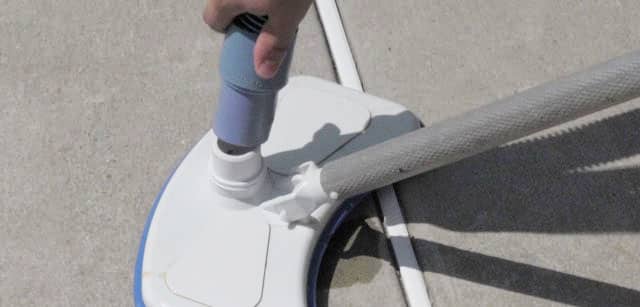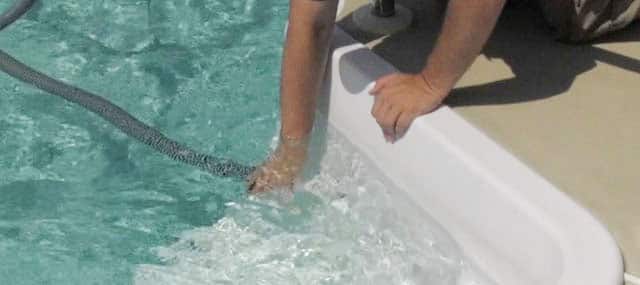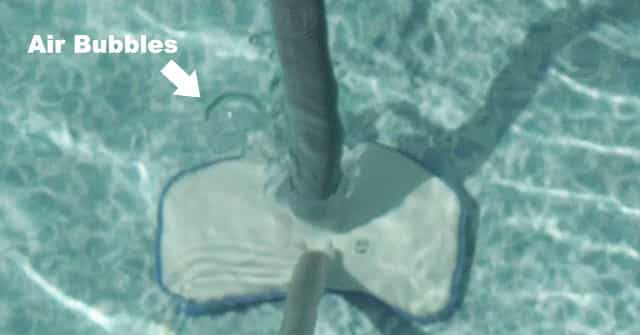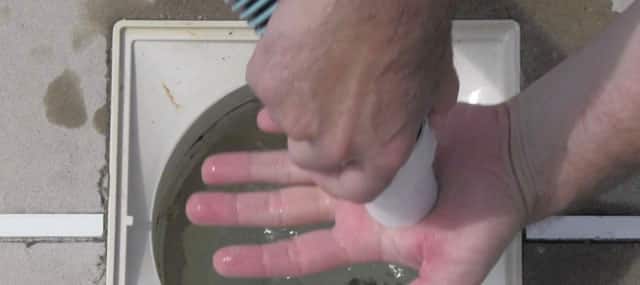Your pool, just like everything else in life, gets a little bit dirty every now and then. When that time comes, it's time to roll up your sleeves and get to work so that you pool will be as clean as the first day it was filled.
But if you prefer a hands-free approach, be sure to check out our collection of pool cleaners here.
Why do you need to learn how to vacuum a pool manually?
- If you don’t own an automatic pool cleaner
- If there is a major problem that can’t be solved with an automatic pool cleaner, such as algae
- It's much cheaper than hiring someone to do it for you
- It's great exercise (yeah, we tell ourselves that a lot of the time)
Equipment you'll need to vacuum your pool manually:
You'll need a few things for you to be able to vacuum your pool manually.
- A Flexible Vacuum Head
- A Telescopic Pool Pole
- A Flexible Pool Hose
- A Vacuum Plate
*Please note that you will be using your existing vacuum plate that suits your pool, not necessarily the Poolrite S2500 plate as showcased above. If you have a different vacuum plate, you can see our entire range of Vacuum Plates through the button below.
Step-by-step manual pool vacuuming guide
1. Attach the vacuum head to the open end of the telescopic pole
2. Take one end of the hose and attach it to the top of the vacuum head. Use a hose clamp if the hose tends to slip off frequently.

3. Place the vacuum head, pole and hose in the pool – all the way to the bottom so that the vacuum head rests on the floor of the pool

With the pump and filter running, take the other end of the hose and put it up against a return jet in the pool. This will push water through the hose and get all the air out.
NOTE: Bubbles will come up from the vacuum head on the floor of the pool. Once the bubbles stop, all the air is out of the hose.

5. If a vacuum plate is NOT being used, remove the basket inside the skimmer, block the end of the hose that has been filled up with water with your hand, and bring it over and into the skimmer. Make sure the hose is inserted into the suction hole at the bottom of the skimmer.

If a vacuum plate is being used, attach it to the end of the hose that was up against the return jet, block the opening, and bring it over to the skimmer. Be sure to create a good seal or suction will be lost.
This will create suction from the vacuum head, through the hose, into the skimmer and through the filter system. Now, it’s time to vacuum the pool.
NOTE: If suction is lost, repeat steps 4 and 5.
Proper Pool Vacuuming Technique
- Start at the shallow end of the pool and work your way towards the deep end.
- Use long, slow, and sweeping strokes while vacuuming.
- Slightly overlap each stroke as not to leave any dirt and debris at the edges of your sweep.
Keep it slow and steady
Rushing will kick up debris, which will reduce visibility and take hours to settle down again, making the process of vacuuming your pool longer than it needs to be. If there’s a lot of debris, you’ll likely kick up a cloud of debris no matter how careful you are, but there’s no need to make more work for yourself by hurrying.
If the water does become cloudy, give it a couple of hours to resettle, then come back and vacuum again, repeating as necessary. If the vacuum head becomes stuck, switch off the pump for a second to break the vacuum force and set it free
Does it sound like a lot of work? Yes it is. It's usually around this part that people will start asking if there's a better way to vacuum the pool, and the answer is yes. We have a whole range of automatic and robotic pool cleaning options which you can check by clicking the button below.
After vacuuming your pool maintenance
Did you think we were done? Vacuuming is only half the battle. There's more to be done after the initial vacuuming stage.
When you’ve finished cleaning your pool, remove the vacuum head from the telescopic pole, and drain any water left in the vacuum hose. Attach your cleaning brush to the pole and use it to scrub away any algae, dirt and debris from the sides of the pool.
Clear any debris in your pump strainer basket and give the sand filter a final backwash if you have a multiport system and have used the ‘Filter’ setting. If you have a cartridge filter, take your filter element out and give it a good hose down.
If you used the ‘Waste’ setting to vacuum the pool, make sure you switch the valve back to the ‘Filter’ setting and keep adding fresh water to your pool until the water level is restored.
Rinse all your equipment with fresh water, dry it and return it to storage. This will help keep it in top working condition and avoid unnecessary wear or corrosion.
You don’t have to dread the vacuum head! When it’s time to vacuum your pool, whether you’re just the hands-on type or waging war on invading algae, you can get the job done by hand with a little preparation, a lot of elbow grease, and a healthy dollop of patience.
That sounds like a lot of work! Is there a better option?
First of all, welcome to the club! While some people find this to be a form of meditation, it’s still a chore. Thankfully, we live in a world of blossoming technology where you can task this to a robotic vacuum cleaner that will do all of that while you just sit on the poolside with a cool drink or do other household chores. (I personally chill at the poolside with a nice book and a cool drink while the robot does its thing and I tell people I'm busy cleaning the pool)
Robotic Pool Cleaners
Robotic cleaners are independent cleaners that vacuum your pool using electricity. You plug them in, drop them in your pool, and let them do all the hard work on their own. All you need to do is empty the built-in filter bag when it’s full of debris. These are by far the best automatic pool cleaners on the market, but they can be a bit pricer.
We personally find Water TechniX SoniX Cordless Robotic Pool Cleaner to be the best valued robotic pool cleaner out there. In fact, it's the model we use at our home pool even if we have more expensive units available to us for use. Interested in learning more about robotic pool cleaners? We have reviewed a whole bunch of them and came up with a list of The Best Robotic Swimming Pool Cleaners.
Suction Cleaners
Suction cleaners are an automatic version of vacuuming your pool manually. They hook up the same way you do when you vacuum your pool manually. The biggest difference, however, is that they move around the bottom of your pool by themselves. That way, you don’t have to stand there in the hot sun and do it yourself.
From all the choices out there, we recommend the Onga Hammerhead Pool Cleaner and the Water TechniX Rapid Automatic Pool Cleaner.
Here are all the products featured throughout this blog post
Do you have any questions about this topic or the featured products? No worries, we're here to help! Drop us a question down below and we'll get back to you ASAP.
Happy swimming :)


2 comments
Emily
Thanks for this very informative post, it is very use to me. I like this post.
Sandra
Hi
This is one of the best how-to guides I’ve read on pool maintenance. It is written in Plain English and is not saturated with so much marketing that it loses credibility. The product recommendations are legitimate.
Good stuff.